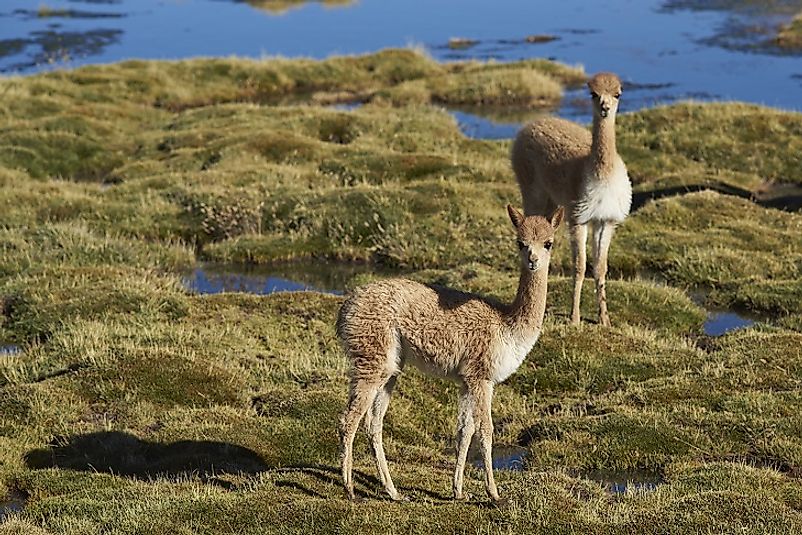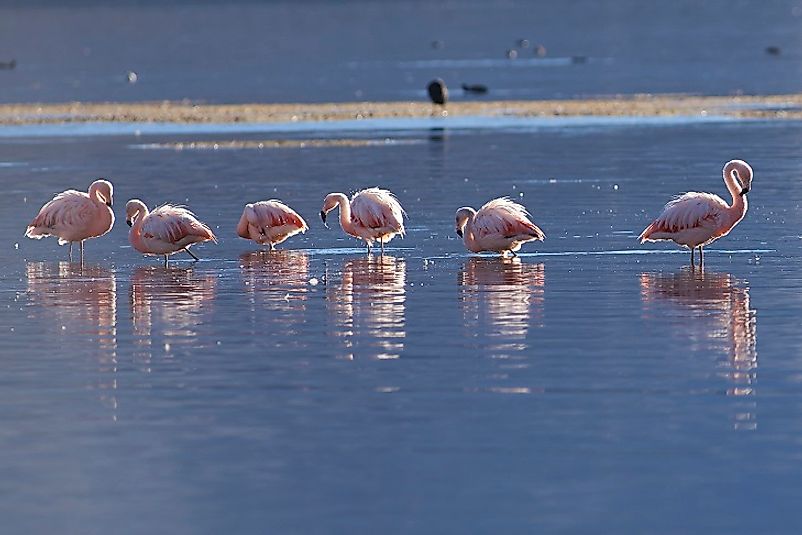Lauca National Park Of Chile

5. Description
Spanning an area of 1,379 square kilometers in the Andean region of Chile’s far north, the Lauca National Park encompasses altiplano and mountain habitats within its range. A large number of volcanoes are hosted by this park which, together with the neighboring Salar de Surire Natural Monument and the Las Vicuñas National Reserve Salar de Surire Natural Monument, comprise the Lauca Biosphere Reserve. The Sajama National Park in Bolivia is contiguous with the Lauca National Park. The Lauca River and the Lluta River are two important rivers flowing through the park. The park hosts unique flora and fauna and is well known for its majestic volcanoes, archaeological sites, and other interesting natural and man-made features.
4. Historical Role
In view of the unique geographical wonders and the rich biodiversity of the Lauca National Park, the Chilean Government declared it as a national park in 1965. The region has been witness to several volcanic eruptions in the past and at present has a small human settlement in the form of the Parinacota hamlet. A 17th Century church in the hamlet is a popular tourist attraction of the park.
3. Tourism and Education
The Lauca National Park can be accessed from the Chilean port city of Arica which is located around 145 kilometers away from the park. The nearest town to the park is Putre, which is located 12 kilometers from the park. The visitors to the Lauca National Park enjoy the activities of hiking and climbing the mountains and exploring the park’s natural features and biodiversity. The lake, Lago Chungará, located at an elevation of 4,520 meters in the park, is one of the highest lakes in the world. Vulcán Parinacota is one of the most notable volcanoes within the limits of the park.
2. Habitat and Biodiversity

The Lauca National Park is located within the Central Andean dry puna climatic belt that is characterized by a cold desert type of climate. The park thrives with great biodiversity and hosts a variety of mammalian species like cougars, guanacos, llamas, and tarucas. Over 140 species of avian fauna are found here. Some of the notable of these species found here include the Andean condor, Andean geese, Chilean flamingos (pictured above), silvery grebes, and the Andean goose. A significant number of wild species found in the park suffer a threatened status due to man-induced factors like hunting and habitat loss. A large number of vascular plants representing around 400 separate species grow in the park.
1. Environmental Threats and Conservation
Like most natural sites in the world, the Lauca National Park has not been spared from the adverse impacts of human activities. Reports mention that the park has several undetected land mines hidden under its surface. There have been attempts made by the Chilean army to detonate these mines but the threat from hidden mines still remain. Another major threat to this national park comes from the potential exploitation of its water resources for mining and other anthropological activities.







